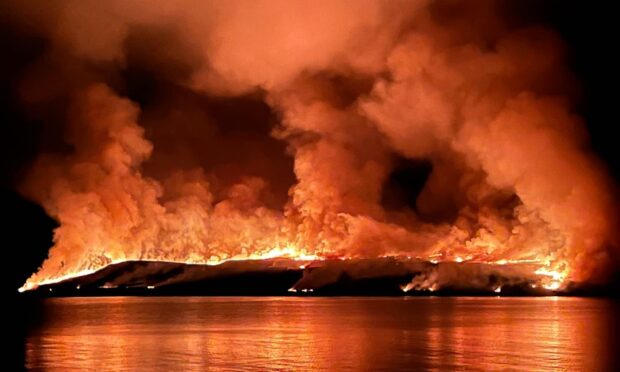There is no risk to public health from the recent wildfire that covered an island once used for bio-weapon experiments, NHS Highland has said.
Gruinard Island, which is located less than a mile from the mainland in the north-west Highlands, went up in flames on Saturday night.
Due to its infamous history as a base for biological tests by the Ministry of Defence, which led to it being given the nickname Anthrax Island, some locals were concerned smoke from the fire could be unsafe.
But the health board has moved to reassure those living nearby that efforts to decontaminate the island more than 30 years ago mean it no longer poses any danger.
A spokesman said: “NHS Highland is aware of the fire on Gruinard Island.
“There is no anthrax on the island following decontamination and decommissioning in 1990 and the fire presents no risk to the public.”
A toxic past
Worries about disease coming from Gruinard Island are understandable, after it was deemed inaccessible for five decades last century due to the lasting effects of controversial experiments during the Second World War.
As part of Operation Vegetarian, 22 mortars containing anthrax spores were launched onto the island, and one larger bomb was dropped from 7,000 feet by a Wellington bomber.
A flock of 60 sheep were kept on the island to assess the impact of the weapons. All of them died, and according to several accounts their bodies were buried before being blown up with 1,000lb of explosives.
Anthrax can live in the ground for more than a millennium, but work to decontaminate the island was completed in 1987 and it was deemed safe.
When asked to comment on the fire on Sunday, an MOD spokeswoman said: “As part of the sale of the island in 1990, the MOD agreed to undertake further work, if necessary, within 150 years of its sale.”
Gruinard Island remains uninhabited by humans, but a number of birds and other wildlife have made their home there since it became safe for life again.
It is currently unknown how these residents have been affected by Saturday evening’s blaze.
